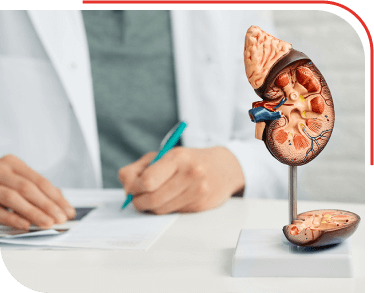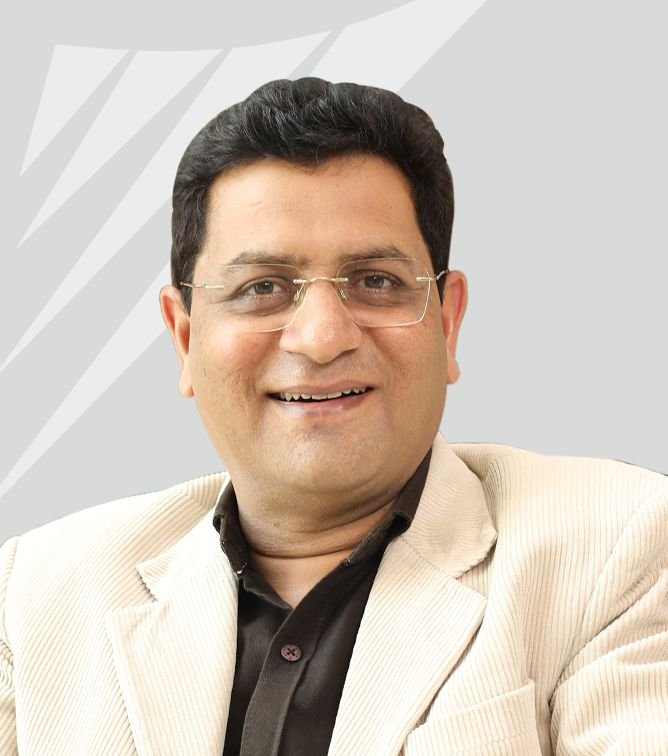Home » Medical Procedure » Kidney Dialysis
Kidney Failure
Dialysis in India
What is Kidney Dialysis?
Kidney dialysis is a treatment for people who have failing kidneys. It is a procedure that can help people with end-stage renal disease to improve their quality of life. Patients who are at risk for certain medical complications, such as the elderly or those who have other underlying medical disorders, face more serious kidney-related issues. Kidneys are responsible for removing harmful and excess fluid and turning products into urine. However, people with kidney conditions often require dialysis procedures on regular schedules.

Renowned Kidney Dialysis Surgeons
at Wockhardt Hospitals
- Mumbai Central
- Mira Road
- Nagpur
- Rajkot
Why is Kidney Dialysis Done?
Kidney dialysis is required if your kidneys are not functioning properly. For example, if you have a progressive chronic kidney condition, you might be unable to clean the blood properly. Without dialysis, the affected kidneys may have a toxic build-up of fluid and waste by-products. This toxic build-up can cause severe health complications, which might result in death.
Thus, dialysis must filter out toxic and unwanted substances and fluid from the blood and keep the body functioning properly.
For better treatment, it is important to choose the best dialysis hospital in India, and the most preferred choice among patients is the Wockhardt Hospital.
What are the Advantages of Kidney Dialysis?
The following are the advantages of kidney dialysis:
- Kidney failure dialysis can be done at home (offers convenience) and in center as well
- It helps remove toxins from your body, which the affected kidneys cannot do.
- Though it cannot fully replace kidney function, it can help you achieve a quality life.
Types of Kidney Dialysis
There are two main types of kidney failure dialysis performed:
Peritoneal Dialysis
In Peritoneal dialysis, a cleansing fluid flows through a tube into the stomach area. The inner line of the abdomen works as a filter and removes waste from the blood. After a particular time, the accumulated fluid is filtered out of the abdomen and thrown out. This dialysis can be done at home, work, or even while traveling. You can do the dialysis yourself or ask your healthcare provider to send a medical professional to help you with the procedure at home.
Hemodialysis
Hemodialysis is one of the most commonly used types of dialysis. A tube is connected to the patient’s arm through a needle during this procedure. The blood travels through the tube to an external machine composed of a dialyzer. It is a filter that has a semipermeable membrane. The device generates a gradient of counter-current flow that allows the dialysate fluid and blood to move in opposite directions. The dialysate fluid then receives the waste products previously present in the blood. Having hemodialysis done is a great responsibility, but you don’t have to shoulder it all alone. Your healthcare provider will help you go through the procedure.
Tests Done Before
Kidney Dialysis
Below are the tests done before kidney dialysis:
- Urine Test
Urine tests check the protein leak in the blood (proteinuria). There are two types of urine tests done to check the protein leak:
- Dipstick Urine Test - This test is usually done to check the overall urine health. But it can also be utilized to check albumin in your urine. It does not tell the exact quantity, but it helps the doctor determine the protein leak.
- Urine Albumin-to-Creatinine Ratio- This test measures the amount of albumin and compares it to the creatinine in your urine. The UACR test tells the doctor how much albumin passes into your blood - a UACR or above 30 means kidney disease.
- Blood Tests
Doctors will also use blood tests to confirm any kidney disease, showing how well the kidney performs. Below are some of the blood tests used to determine kidney health:
- Serum Creatinine - Your serum creatinine level increases if your kidneys aren't functioning properly, which is determined by a serum creatinine blood test. A creatinine level exceeding 1.2 for women and more than 1.4 for males often indicates impaired renal function. Your doctor can order additional tests if the findings of the serum creatinine test are higher than expected.
- Glomerular Filtration Rate (GFR) - The GFR gauges how well your kidneys filter out extra fluid, waste, and poisons from your blood. A normal GFR value for you will depend on your age and sex, just as with other kidney tests. Your kidneys are probably not functioning as they should if your GFR is lower than expected. Your GFR decreases throughout the renal disease.
- Other tests like - Virology test and test to asses bone health.
The doctor might also ask to do imaging tests and a kidney biopsy to check for any sign of damage to the kidney – as it is one of the most crucial organs in the human body.
How is Kidney
Dialysis Performed?
Kidney dialysis is performed in two ways:
-
Hemodialysis
In this procedure, a machine is connected to the body that filters out all the waste products. -
Peritoneal Dialysis
In this procedure, the toxins and wastes are filtered out through a dialysis solution - a mixture of water, salt, and other additives.
Before Procedure
Before hemodialysis, the doctor will perform minor surgery to easily access the bloodstream. The surgery can either be
- Arteriovenous Fistula - In this surgery, the doctor connects your artery with the veins.
- Arteriovenous Graft - In this surgery, the surgeon uses a graft to join the artery and the veins if they are too short.
Before peritoneal dialysis, the surgeon will perform minor surgery to insert a soft, thin tube through your belly and into the peritoneal, where the catheter (thin tube) stays permanently.
During Procedure
During hemodialysis, the machine does the following:
- Removes blood
- Circulates blood through a dialyzer filter, which moves the waste into the dialysis solution.
- The filtered blood gets back to your body through a different needle.
- Your blood pressure is monitored to adjust the blood flow in your body.
This is what happens during peritoneal dialysis:
- A branch of the Y-shaped tube that links to the bag containing the dialysis fluid has a catheter attached to it.
- The fluid enters the peritoneal cavity of the abdomen through the catheter and tubing.
- After 10 minutes, when the bag is empty, the tube and the catheter are empty.
- You can continue your routine activities while the dialysis solution inside the peritoneal cavity absorbs waste and excess fluid from the body.
- You can repeat the dialysis process in the same way again, whenever recommended.
After Procedure
After hemodialysis, you might experience low blood pressure and feel nauseous, dizzy, or faint. Other side effects of the procedure are:
- Chest pain or back pain
- Itchy skin
- Headaches
- Muscle cramps
- Restless legs syndrome
After peritoneal dialysis, you might feel your belly full or bloated, which can be uncomfortable. You can consult your nephrologists or kidney doctor to alleviate any post-procedure complications.
Recovery after Kidney Dialysis
Kidney failure dialysis is not a major procedure. Thus, there is no recovery period required in this case. However, you must take care of the minor surgery to insert the catheter. Your doctor will advise on certain do’s and don’ts. Also, they will advise you on how to take care of and do your at-home or in center dialysis.
What are the Risks and Complications of Kidney Dialysis?
While kidney dialysis has many advantages and benefits, it has certain risks and complications. Some of the common risks associated with kidney failure dialysis are as follows:
- Low blood pressure (During or after hemodialysis)
- High blood pressure
- Muscle cramps
- Sleep problems
- Anemia
- Itching
- Bone disease
- Fluid overload
- Inflammation of the membrane surrounding the heart
- High or low potassium levels
- Depression
- Amyloidosis
- Access site complications
FAQs on Kidney Dialysis
Q1. What stage of kidney failure requires dialysis?
When kidney function falls below 10-15% of normal, a person is said to have end-stage renal disease (ESRD), the last stage of kidney failure. Dialysis is usually advised in these cases. By now, the kidneys are unable to eliminate waste and extra fluid from the body; dialysis is required to carry out these essential tasks.
Q2. Does dialysis weaken the body?
For those with kidney disease, dialysis is essential, but there are some side effects to be aware of. Frequent sessions can result in anaemia, low blood pressure, exhaustion, and cramping in the muscles, even if it helps in the body’s removal of waste and extra fluid. Nonetheless, many people are able to retain a decent quality of life with the right management and care.
























